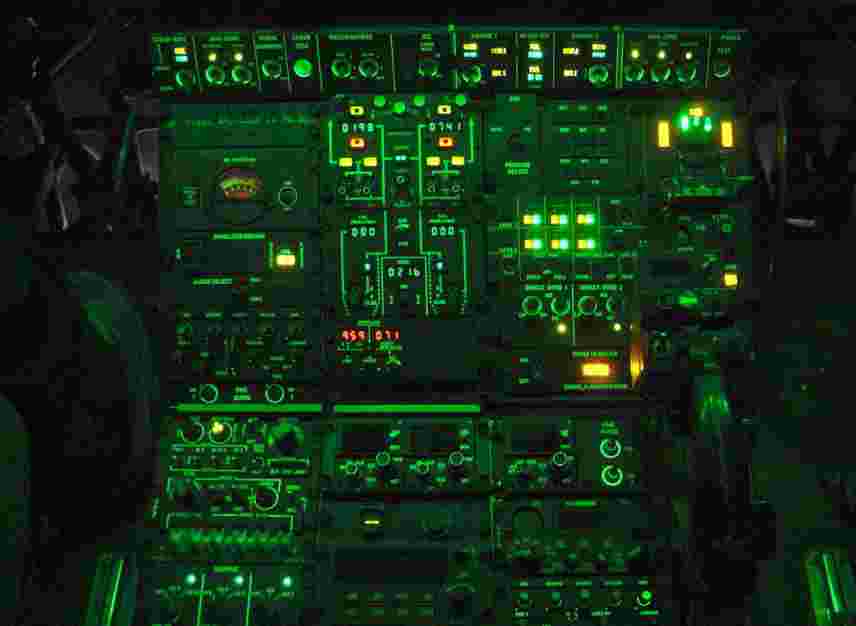The operational environments encountered by military aircraft, armored vehicles, and naval platforms subject electronic systems to conditions that would destroy consumer-grade displays within hours. Temperature extremes ranging from Arctic operations to desert climates, sustained vibration during off-road maneuvers, electromagnetic interference from powerful radar systems, and the corrosive effects of salt spray create an unforgiving gauntlet that only purpose-built rugged HMI systems can survive. Understanding the engineering solutions that enable cockpit display systems to operate reliably in these extreme conditions is essential for system integrators and design engineers specifying components for mission-critical platforms.
Thermal Management Across Extreme Temperature Ranges
Military specifications often require rugged HMI displays to operate from -55°C to +85°C—a 140-degree temperature span that creates profound engineering challenges. LCD technology becomes sluggish and unreadable at cold extremes while heat accelerates component degradation and optical failures. Sophisticated thermal management addresses these challenges through multiple approaches:
Component Selection: Military-grade displays use industrial temperature-range components rated for extended operating ranges. LCD panels require special formulations with modified liquid crystal compounds that maintain optical properties at temperature extremes. Capacitors, resistors, and integrated circuits must maintain electrical parameters across the full specification range.
Active Heating Elements: Transparent resistive heaters integrated into display assemblies prevent LCD freezing in extreme cold. These heaters activate automatically when temperature sensors detect conditions approaching LCD lower operating limits, maintaining minimum temperature thresholds necessary for proper operation.
Advanced Cooling Architecture: High-brightness backlighting and processing electronics generate significant heat requiring removal even at elevated ambient temperatures. Cockpit display systems employ combination approaches including heat pipes, phase-change materials, and engineered thermal paths conducting heat to aircraft mounting structures. Some applications require forced-air cooling or liquid cooling integration.
Thermal Cycling Resistance: Beyond steady-state temperature operation, displays must survive rapid temperature transitions—landing in Alaska after deploying from desert regions, or altitude changes from sea level to 40,000 feet. Thermal shock testing verifies material compatibility and eliminates differential expansion issues that could cause delamination or mechanical failures.
Vibration and Shock Isolation Engineering
Combat aircraft routinely experience vibration environments exceeding 7.7 Grms across broad frequency ranges, while armored vehicles encounter severe mechanical shocks during off-road operations and weapons firing. Rugged HMI systems survive these conditions through comprehensive mechanical design:
Shock Mounting Systems: Displays incorporate isolation mounting systems using elastomeric dampers calibrated to platform-specific vibration profiles. These mounts decouple displays from chassis vibration while maintaining structural integrity under crash loads.
Reinforced Display Panels: Glass substrates use chemically strengthened or multi-layer laminated constructions that resist crack propagation from impact. Some military applications specify displays that maintain operation even with cracked outer glass layers.
Internal Component Securing: All internal components including circuit boards, connectors, and cables are mechanically locked to prevent relative motion during vibration. Threadlocking compounds, staking, and potting compounds prevent fastener loosening that would lead to intermittent failures.
Connector Retention: Display connectors incorporate positive locking mechanisms and strain relief preventing disconnection during vibration. Some designs employ redundant connector retention features ensuring connection integrity even if primary locks fail.
Electromagnetic Interference Immunity and HIRF Protection
Modern military platforms generate intense electromagnetic fields from radar systems, electronic warfare equipment, and communication arrays. Cockpit display systems must operate flawlessly despite electromagnetic environments that can couple hundreds of volts into unprotected electronics:
Shielding Architecture: Multi-layer shielding approaches using conductive enclosures, metalized gaskets, and filtered apertures prevent electromagnetic energy from coupling into sensitive circuits. Displays achieving MIL-STD-461 compliance incorporate shielding effectiveness exceeding 80dB across broad frequency ranges.
Filtered Power Inputs: Specialized EMI filters on power inputs prevent conducted interference from aircraft electrical systems. These filters employ both common-mode and differential-mode suppression ensuring clean power delivery regardless of bus conditions.
Isolated Communication Protocols: Data interfaces use transformer or optical isolation preventing ground loops and common-mode interference from corrupting display data. Some applications require fiber optic communication eliminating conductive paths entirely.
HEMP Protection: Nuclear electromagnetic pulse (NEMP) and high-altitude electromagnetic pulse (HEMP) protection requires additional hardening measures including transient voltage suppressors, gas discharge tubes, and sacrificial protection circuits that prevent catastrophic damage during pulse events.
Environmental Sealing and Contamination Resistance
Deployment environments expose displays to rain, dust, salt spray, hydraulic fluid, jet fuel, and various chemical agents. Comprehensive sealing prevents these contaminants from degrading performance:
IP67/IP68 Sealing: Military rugged HMI systems typically achieve IP67 or IP68 ingress protection ratings, withstanding temporary immersion and sustained exposure to dust and water. Specialized sealing materials maintain compression across temperature extremes preventing seal degradation.
Nano-Coating Protection: Advanced conformal coatings applied to circuit boards create moisture barriers protecting components from corrosion and electrical leakage. Some coatings provide chemical resistance to fuels, oils, and cleaning solvents.
Pressure Equalization: Aircraft displays must withstand rapid pressure changes during climbs and descents without seal failure or internal condensation. Pressure equalization membranes allow air exchange while blocking liquid and particulate ingress.
Fungus Resistance: Tropical deployments create conditions promoting fungal growth that can obscure optical surfaces and damage seals. Fungicidal treatments and material selections meeting MIL-STD-810 fungus resistance requirements prevent biological degradation.
Long-Term Reliability and Component Selection
Displays in military platforms must function reliably throughout service lives exceeding 20-30 years with minimal maintenance:
MTBF Optimization: Mean time between failures exceeding 100,000 hours requires conservative component derating, extensive screening, and burn-in testing. Manufacturers like Aeromaoz, known worldwide for rugged mission-critical HMI solutions in aviation and defense applications, employ rigorous qualification programs ensuring components meet stringent reliability targets.
UV Resistance: Sunlight exposure degrades plastics and adhesives unless specifically formulated for UV resistance. Optical materials use UV-resistant polymers and stabilizers preventing yellowing and mechanical degradation.
Accelerated Life Testing: Highly accelerated life testing (HALT) and highly accelerated stress screening (HASS) methodologies identify latent defects and verify design margins before field deployment.
Conclusion
Building rugged HMI displays capable of withstanding extreme military and aerospace environments requires comprehensive engineering addressing thermal, mechanical, electromagnetic, and environmental challenges simultaneously. For system engineers and procurement professionals developing next-generation platforms, partnering with manufacturers demonstrating proven capabilities across these disciplines ensures cockpit display systems deliver reliable performance throughout demanding operational lifecycles in the world's harshest deployment environments.




